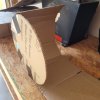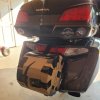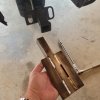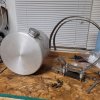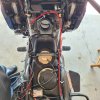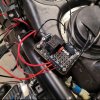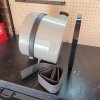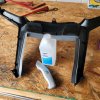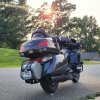I tested the system last night by siphoning out a half gallon of gas from the main tank and putting it in the aux tank.
CRAP! THE FILTER'S NOT TIGHT! 
My inline fuel filter was a 2-piece aluminum design with cleanable media, and the top wasn't screwed on fully. Gasoline all over the place, and my wife wasn't thrilled about the smell.
After scurrying around like a madman, I'm pleased to say that the system appears to be gas-tight. When I hit the pump, it pumped a half gallon of gas in approximately a minute. So I call that a win. I'll test it more later this weekend.
So back to the original design brief. The goals were:
1)
Get the cell as close to the bike as possible - The fuel cell is within 1 inch of the trailer hitch assembly, which gives me just enough room to run wiring and fuel tubing.
2)
Get the cell as high as possible without interfering with the visibility of the stock lighting - Done. Any higher, and I'd have to make lighting modifications.
3)
Make the cell assembly as light as possible - Total empty weight of fuel cell assembly is 11 pounds, 4 ounces. For the sake of comparison, the cell assembly I bought before weighed 35 pounds. Given that gasoline weighs approximately 6 lbs./gal, the total fueled weight of my fuel cell assembly should be approximately 39 pounds.
4)
Keep any bodywork modifications to an absolute minimum - The only piece of bodywork that I modified was a second fender. The original one is in stock condition, and can be put back on the bike any time.
So that's my taildragger. It was a lot of extra work, just to make up for the fact that I wanted it to be closer and higher than the one I originally bought. But now it's mine and there's not another one 100% like it.
I'll let you guys know how the shakedown cruises go. I have a trip to Long Beach, CA coming up in July, and wanted the extra fuel ready to go before then.



